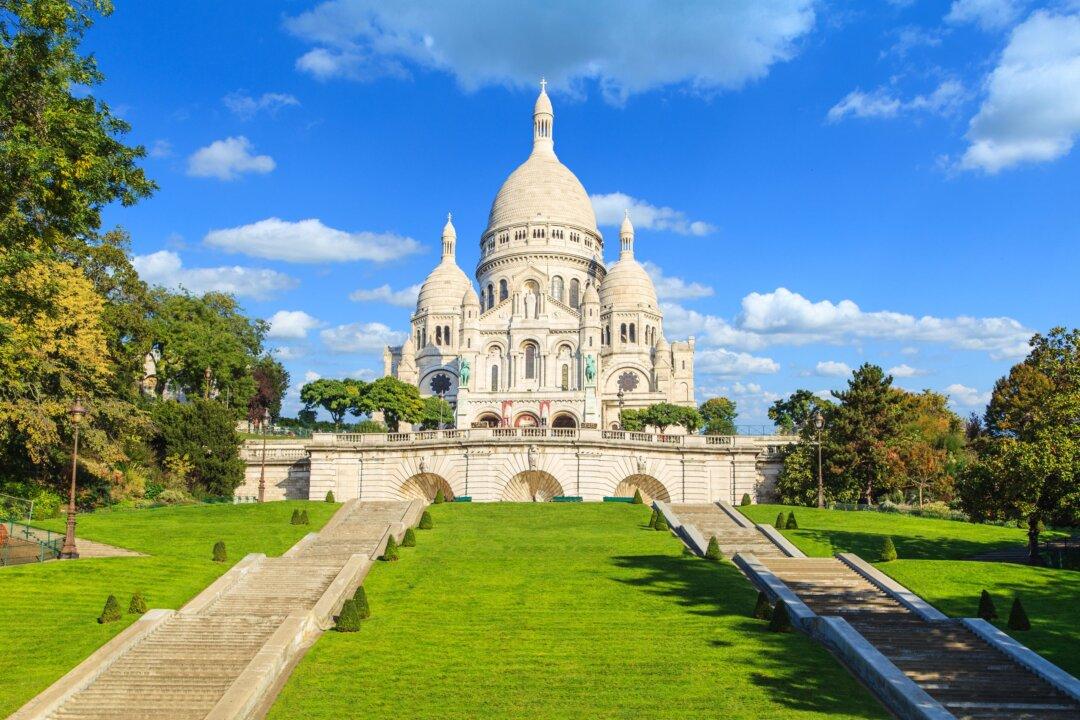Set on a hill in Montmartre, a district in the heart of Paris, the Sacré-Coeur Basilica is hard to miss. With its chalky-white façade and prominent domes, the structure doesn’t look like any other French religious building. Its origin is as colorful as its stained-glass windows.
In December 1870, following France’s military defeat by Prussia, two men, philanthropist Alexandre Legentil and artist Hubert Rohault de Fleury, took on a spiritual initiative. They led a community effort to erect a church in Paris dedicated to the Sacred Heart of Jesus as a symbol of the nation’s penitence, faith, trust, and hope. In July 1873, the French Parliament declared that the construction of a new church was in the public interest.






